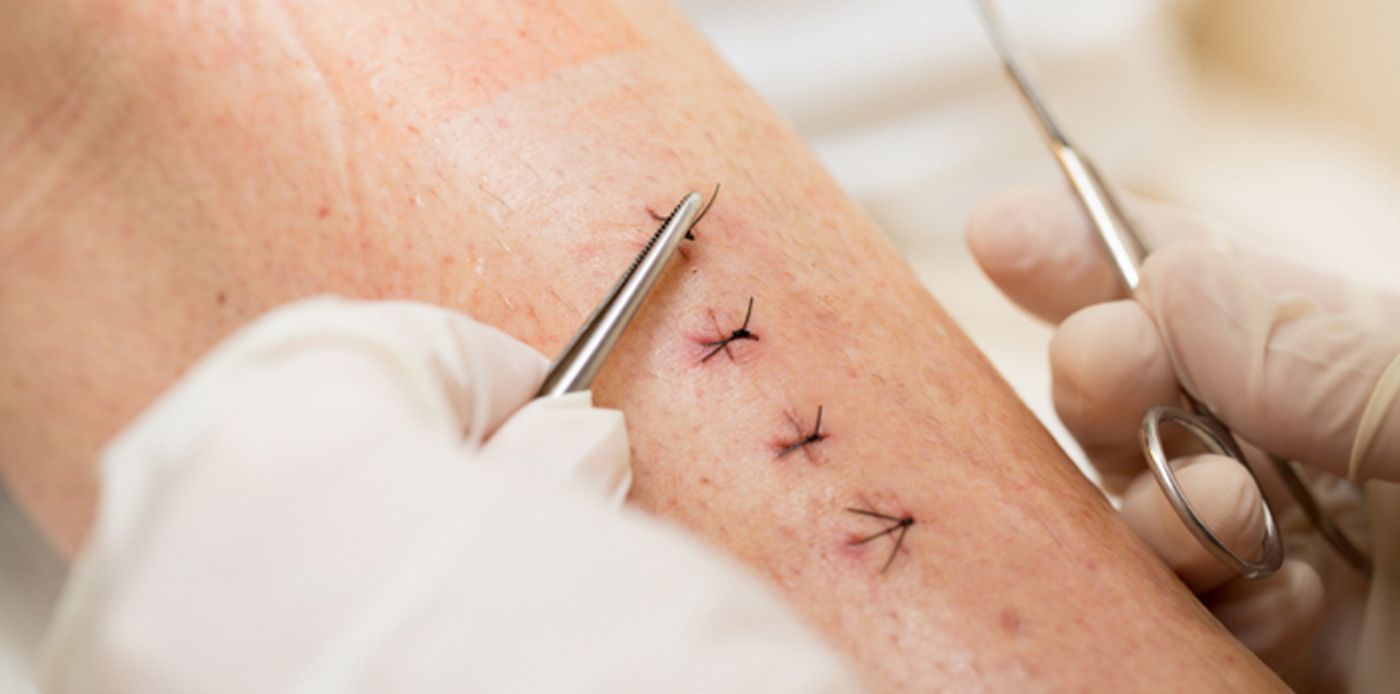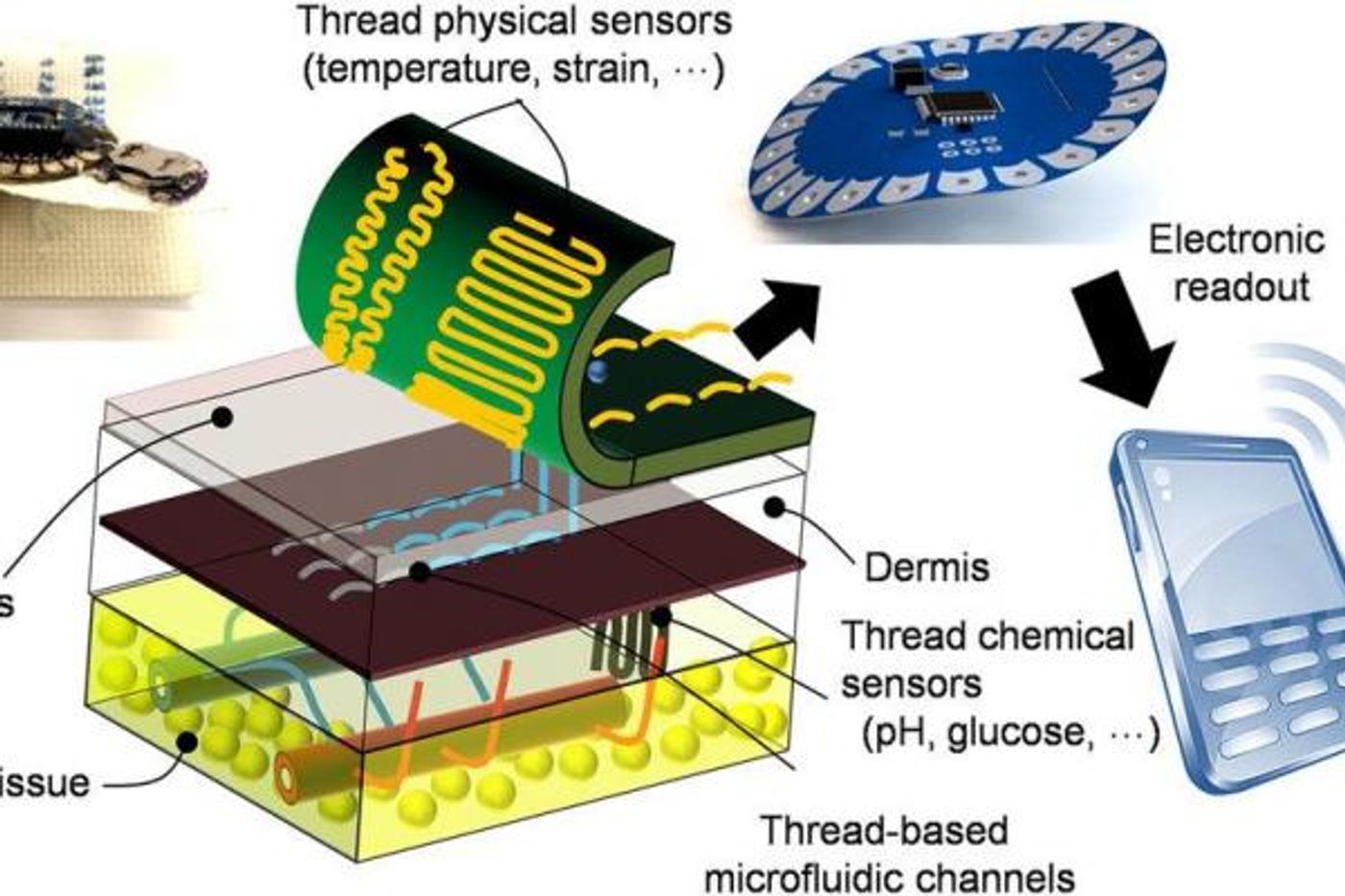In a world of new-age smart medicine and implantables, doctors at Tufts University have achieved a first that surpasses the wildest imaginations: “
smart threads” that not only suture tissues, but can collect and transmit data back to a receiver on the skin surface.

The smart threads represent a true tour-de-force effort that involved nanotechnology, electronics, and microfluidics networking. By coating conductive threads with physical and chemical sensors, the team succeeded in a new diagnostic platform that can be sutured through layers of tissues in 3 dimension and collect diagnostic data in real-time.

As proof-of-concept, the team sutured tissues in rats and the threads were able to transmit valuable data such as temperature, pressure, pH and glucose levels on the surrounding area. This wealth of information could be used to infer how well a wound is healing and guide post-operative treatments to minimize infections and other complications.
"The ability to suture a thread-based diagnostic device intimately in a tissue or organ environment in three dimensions adds a unique feature that is not available with other flexible diagnostic platforms," said Sameer Sonkusale, director of the interdisciplinary Nano Lab in the Department of Electrical and Computer Engineering at Tufts School of Engineering, and senior study author.
The team reported the smart threads could "interface intimately with biological tissues in three dimensions," meaning the thin, flexible threads can conform to different tissue layers and complex organs.
And although it seems like smart threads could be an expensive endeavor that won’t be feasible due to costs, the team reports the materials in their invention are relatively inexpensive. By contrast, other available implantable devices, like smart insulin patches, are quite costly.
As if those feats aren’t enough, the smart thread may also be adapted to not only sense, but treat. “Analytes can be delivered directly to tissue by using thread’s natural wicking properties,” said Pooria Mostafalu, first author of the study.
“We think thread-based devices could potentially be used as smart sutures for surgical implants, smart bandages to monitor wound healing, or integrated with textile or fabric as personalized health monitors and point-of-care diagnostics," said Sonkusale. But there are plenty of work left to do before surgeons are using smart threads in the OR. One main concern that’s yet to be fully tested is the biocompatibility of the thread in patient tissues.
Additional source:
Tufts press release

 As proof-of-concept, the team sutured tissues in rats and the threads were able to transmit valuable data such as temperature, pressure, pH and glucose levels on the surrounding area. This wealth of information could be used to infer how well a wound is healing and guide post-operative treatments to minimize infections and other complications.
As proof-of-concept, the team sutured tissues in rats and the threads were able to transmit valuable data such as temperature, pressure, pH and glucose levels on the surrounding area. This wealth of information could be used to infer how well a wound is healing and guide post-operative treatments to minimize infections and other complications.







